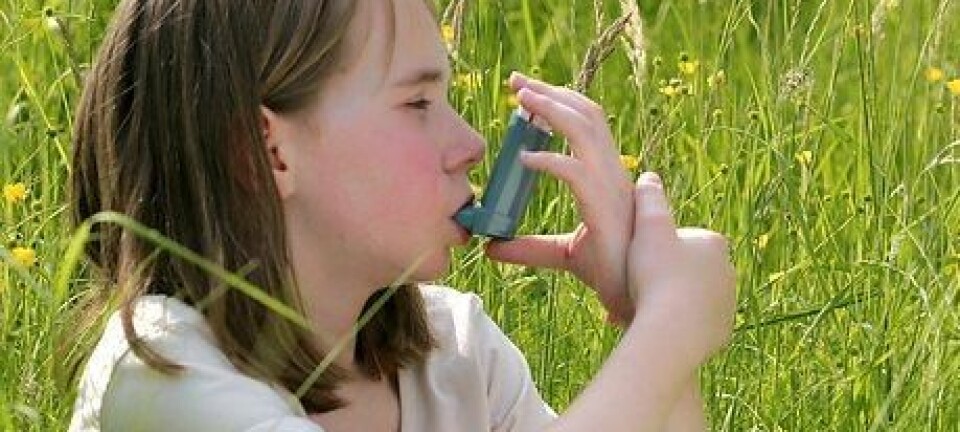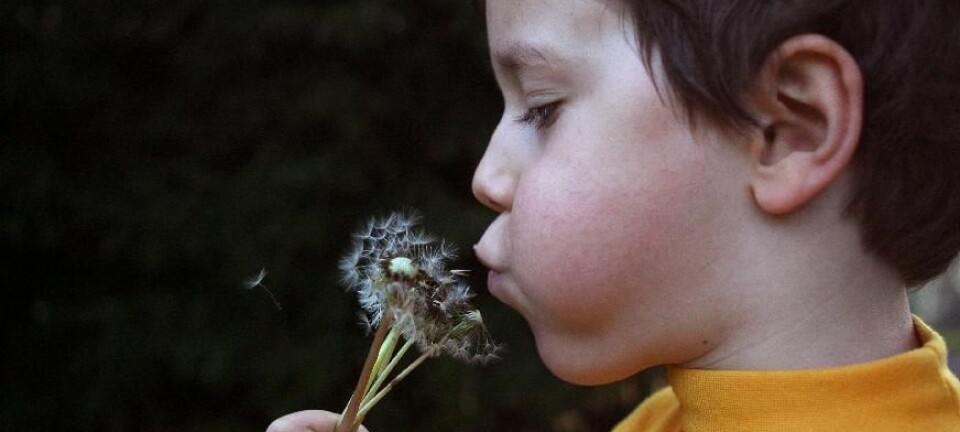
Common cold can trigger asthma
If a child’s body contains certain genetic variants, a common cold is enough to trigger asthma, new study reveals.
If young children are hit hard by a cold, it can be hard for them to breathe. But this usually passes.
For some children, however, the breathing difficulties persist because they develop asthma once the cold has passed. A new study has now discovered why this happens to some and not to others.
Special gene combined with a cold = asthma
The answer lies in the genes. The risk of asthma is significantly increased if the child carries certain variants in a specific gene (ORMDL3 on chromosome number 17) and is infected with a so-called rhinovirus, most common viral infective agent in humans and the predominant cause of the common cold.
“We have found that the asthmatic effect of this gene only kicks in when the child is hit by a rhinovirus specifically and no other types of virus. This is extremely interesting and strongly supports the idea that asthma develops in an interaction between genetics and environmental factors,” says Hans Bisgaard, the head of the Danish Pediatric Asthma Centre at Copenhagen University Hospital in Gentofte and a professor of paediatrics at the University of Copenhagen.
The interplay is a great risk factor for asthma
We have found that the asthmatic effect of this gene only kicks in when the child is hit by a rhinovirus specifically and no other types of virus. This is extremely interesting and strongly supports the idea that asthma develops in an interaction between genetics and environmental factors.
Bisgaard and his Danish colleagues Eskil Kreiner-Møller and Klaus Bønnelykke made the discovery in collaboration with a team of US researchers, chiefly from the University of Chicago. The study is published in The New England Journal of Medicine.
In a video comment on MedPage Today, Associate Professor Deborah Gentile of Temple University School of Medicine, Philadelphia, Pennsylvania, notes that the risk of developing asthma is increased 26-fold when a child has a combination of the genetic variants in ORMDL3 and a rhinovirus in their body.
”That’s a rather American way of looking at it, because it doesn’t take a lot to increase the risk 26-fold.” says Bisgaard, “But there’s no doubt that this is a very big risk factor for asthma.”
No immediate effect on asthma treatment
The obvious question for parents who are concerned about their children’s colds is: how can an ordinary father or mother use these findings? Here, Bisgaard is keen to point out that it’s too early to draw any conclusions about the consequences of the new findings:
“The study gives us an insight and an understanding that paves the way to new treatment and prevention of asthma. But there are no practical consequences here and now for anyone other than nerds like us, who find this incredibly exciting.”
Many mysteries remain about the causes of asthma
The data included samples from 700 children from two cohorts, one from the US (Childhood Origins of Asthma, COAST) and one from Denmark (The Copenhagen Prospective Study on Asthma in Childhood, COPSAC).
The study helps explain the causes of asthma, but a lot of work remains to be done to uncover the full mechanism behind all asthma cases.
Researchers at the Danish Pediatric Asthma Centre are currently looking into what effect the mother’s intake of vitamin D and fish oil during pregnancy has on the baby’s asthma, and which other factors in our surroundings affect the risk of developing asthma.
The baby’s earliest environment is crucial
“In our [research] world, the new findings confirm our research strategy, which focuses on genetics and environmental factors. I have no doubt that chronic diseases such as asthma and allergies, and other chronic diseases too, are formed as the result of an interaction between genes and environmental factors during pregnancy and the first months of life,” says the professor.
“It is therefore extremely important that we understand the importance of the environment that pregnant women and new-born babies live in – which environmental factors determine health and disease. This is where the key to future disease prevention lies.”
------------------------
Read the Danish version of this article at videnskab.dk
Translated by: Dann Vinther











